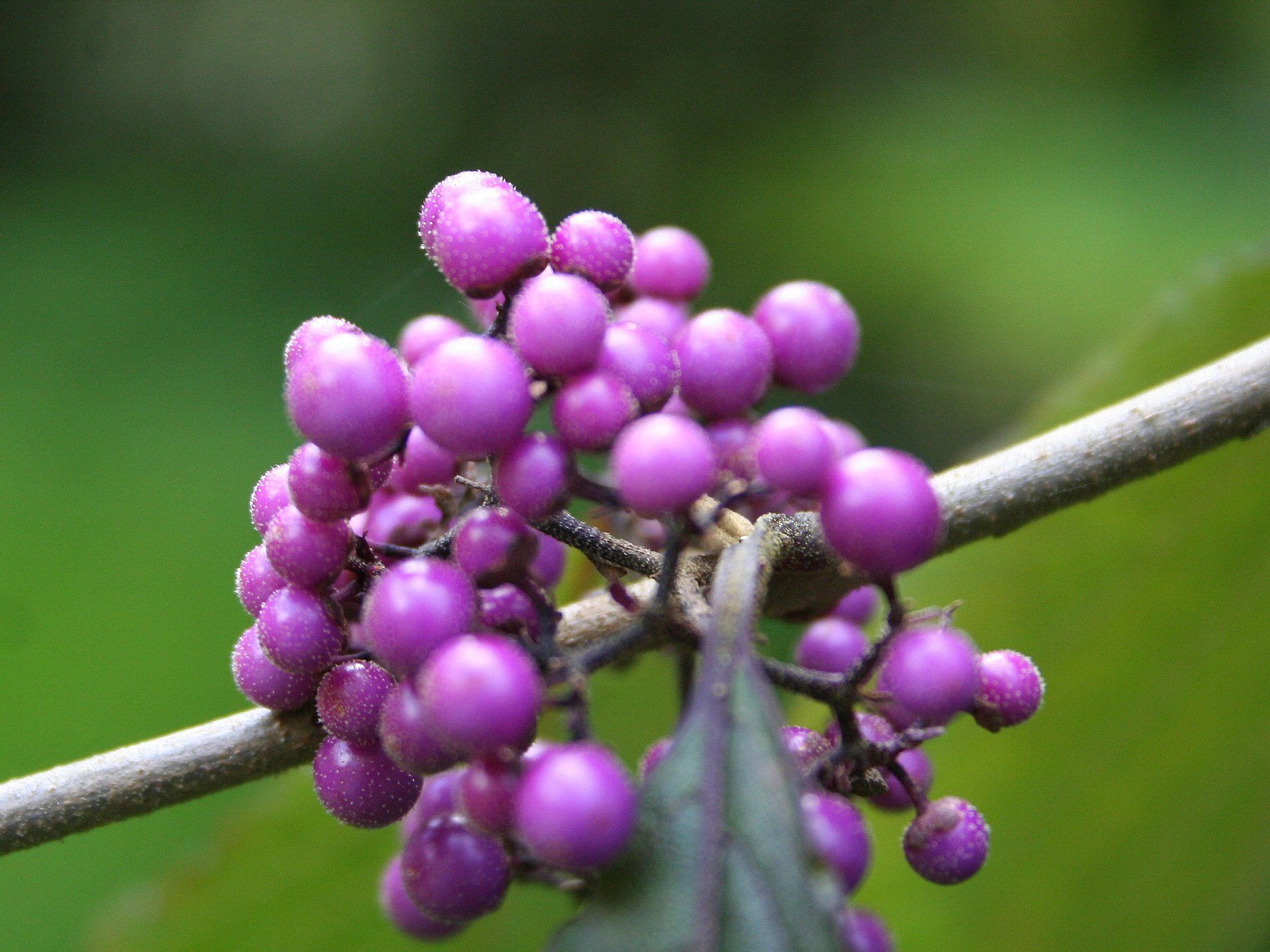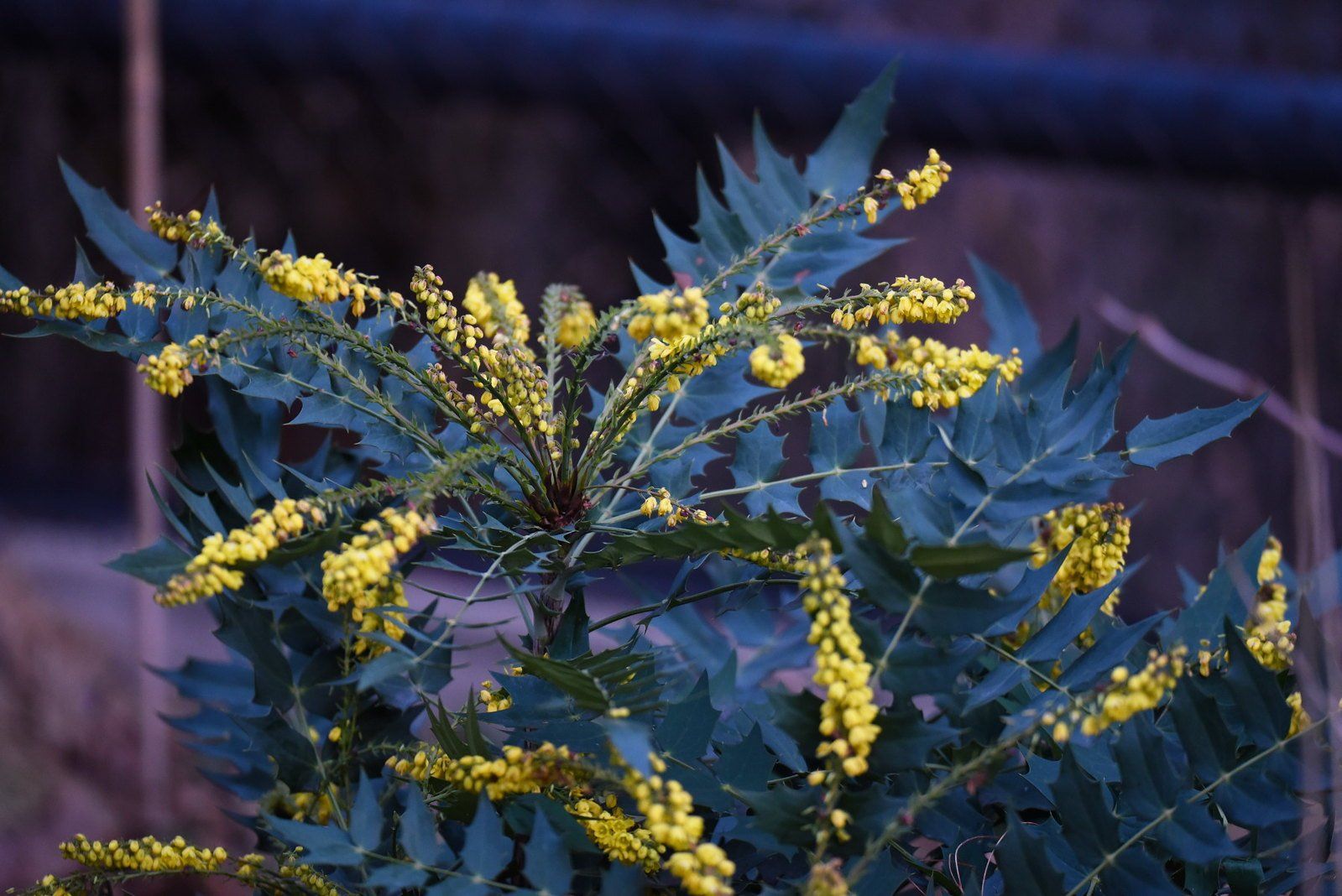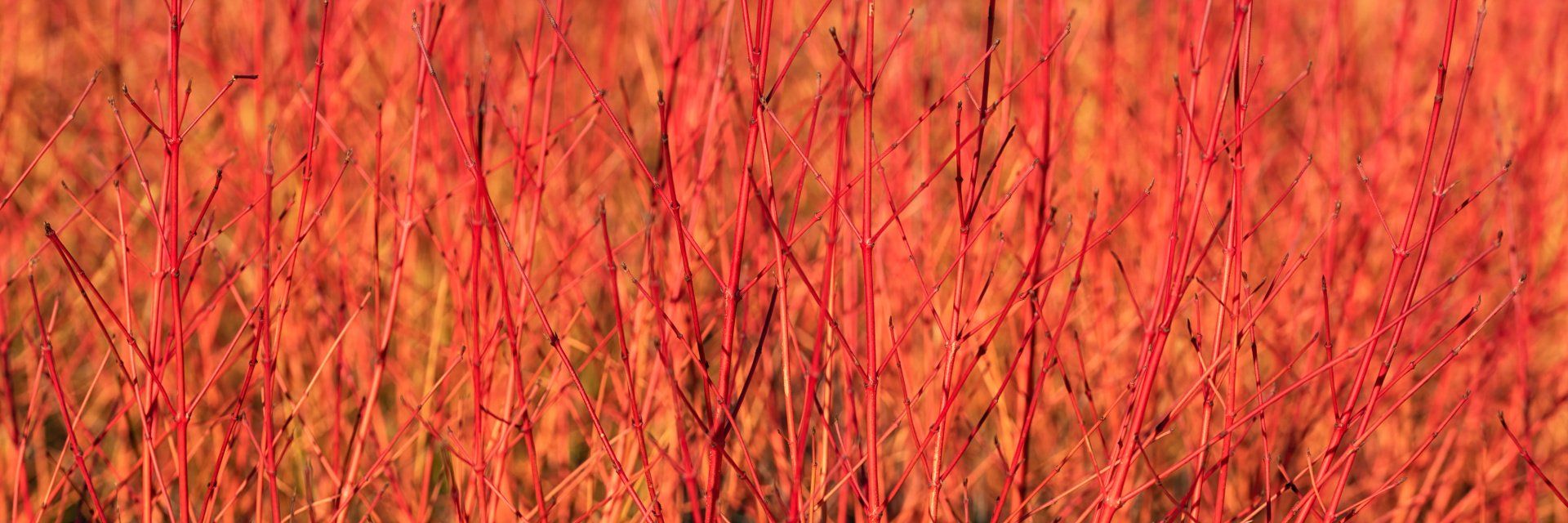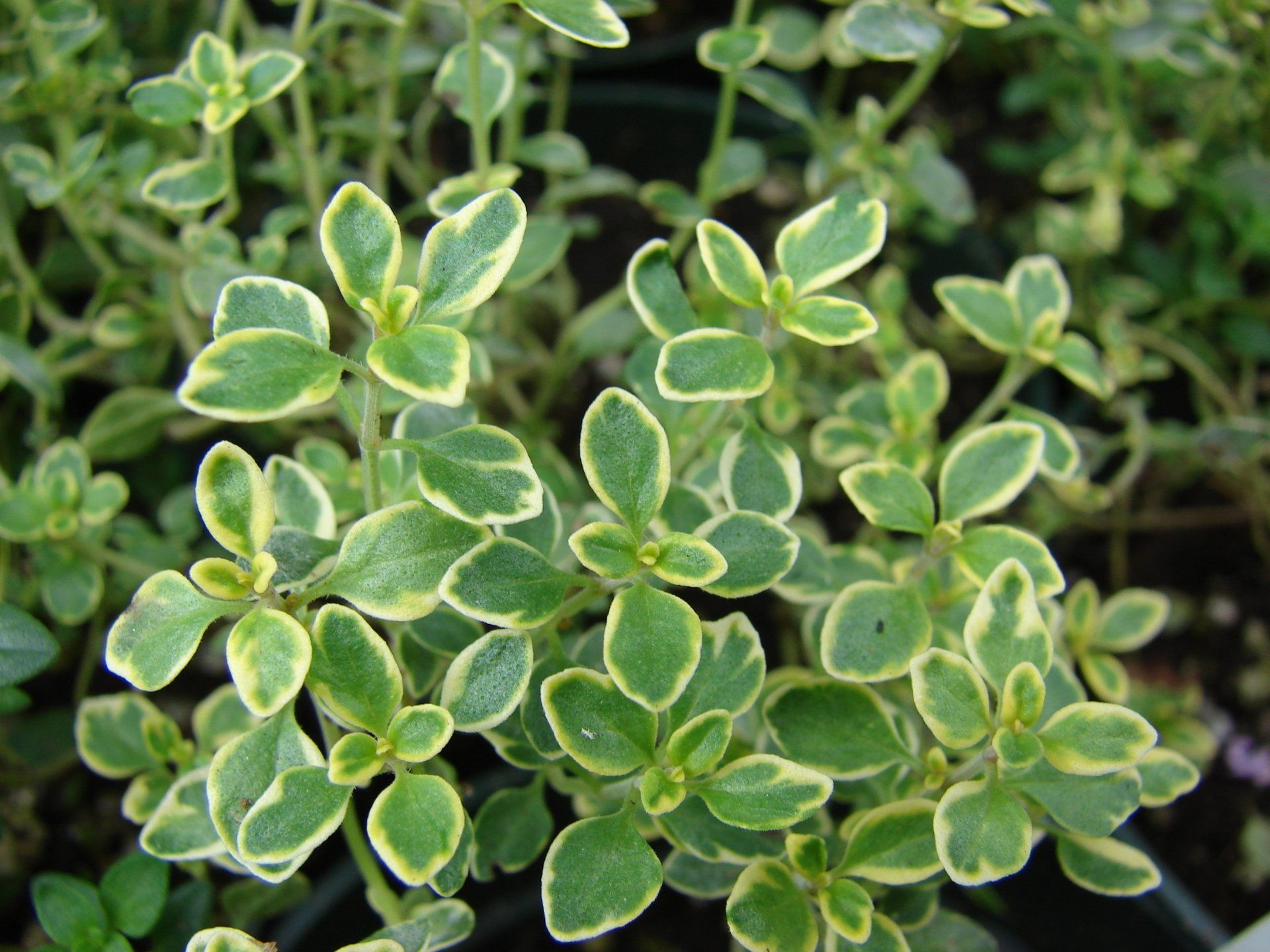Plant of the Week: Thyme
Thyme is an attractive and wonderfully fragrant evergreen herb that can be harvested all year round. It provides excellent ground cover and is used in a wide range of delicious recipes; it makes a particularly good seasoning for poultry, fish, carrots, parsnips, and roast potatoes.
Common Thyme (Thymus vulgaris)
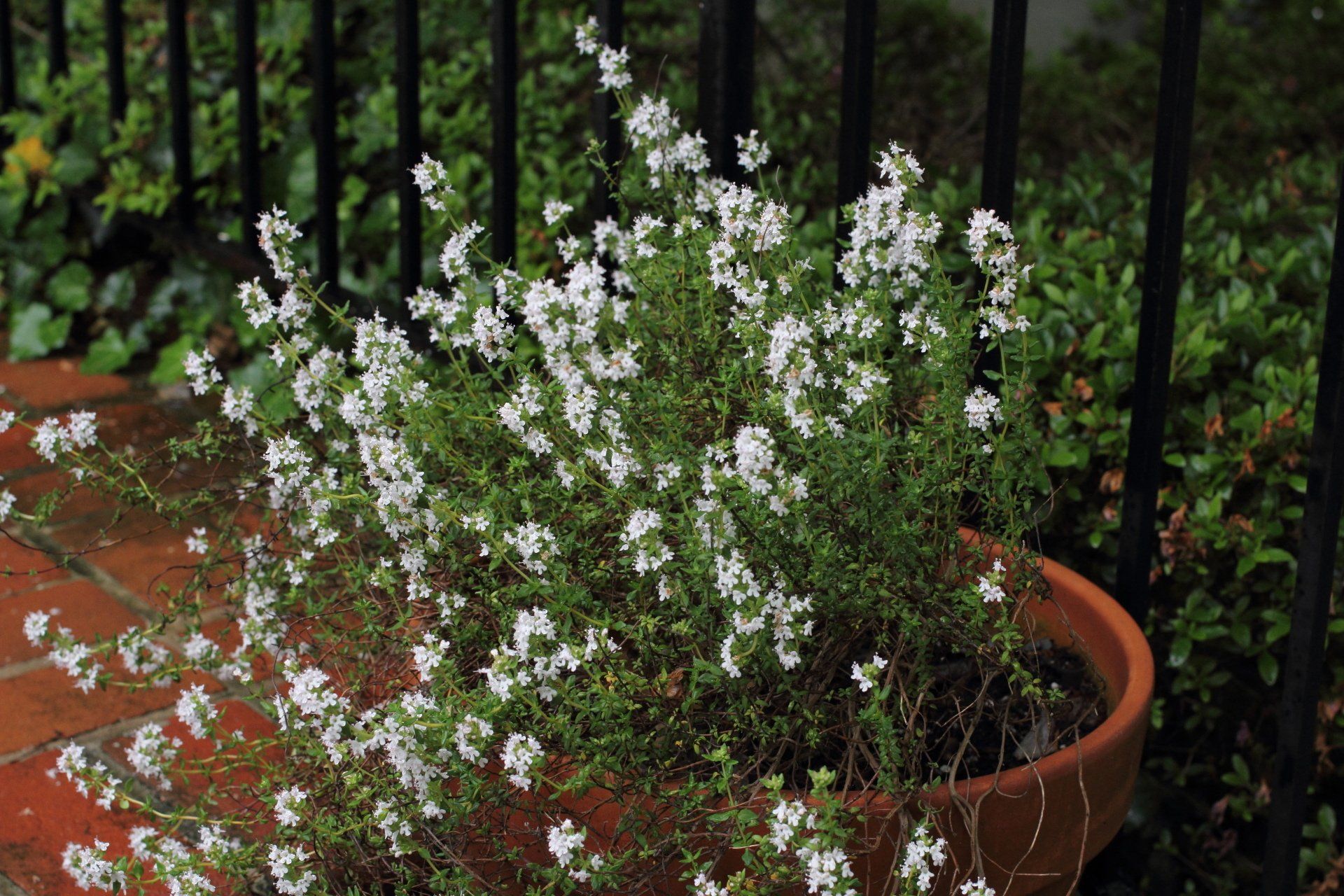
Common thyme is a low-growing hardy perennial that originated in southern Europe and northern Africa. The origin of the word, "thyme," is thought to be derived from the Greek word, thumos, which means "courage" or the Greek word, thymos, meaning "perfume." The species name, vulgaris, is Latin and means "common" or "widespread."
Thyme performs best in dry, sandy, or rocky soils, like those found in the Mediterranean. It prefers full sun and requires good drainage.
The plant is frost and drought-tolerant but should be trimmed whenever it gets leggy and cut back in early spring and summer to reduce its woody growth. It is also an excellent container plant for those with limited outdoor space.
Archers Gold (Thymus citriodorus)
Archers Gold is known for attracting beneficial insects, such as bees and butterflies as well as other pollinators. It is a “caterpillar food” plant and has nectar-rich flowers. Historically, there has been some confusion over the plant's correct name and origin but recent DNA analysis suggests that it is not a hybrid, but a distinct species that was reportedly first discovered in 1811 by Bill Archer in Somerset.
Archers Gold is a mat-forming lemon-scented thyme, bearing golden-yellow-green leaves and pink flowers in summer. It is generally pest and disease free, making it ideal for growing at home in the garden. It can be planted along walkways or between paving stones so that the lemon scent can be enjoyed whenever the plant is disturbed. Under ideal conditions, it will spread up to 45cm across.
In winter, as the weather becomes colder, the gold colour intensifies and they look particularly attractive planted in containers with tiny dwarf daffodils or crocus, to give an early spring display.
Caraway Thyme (Thymus herba-barona)
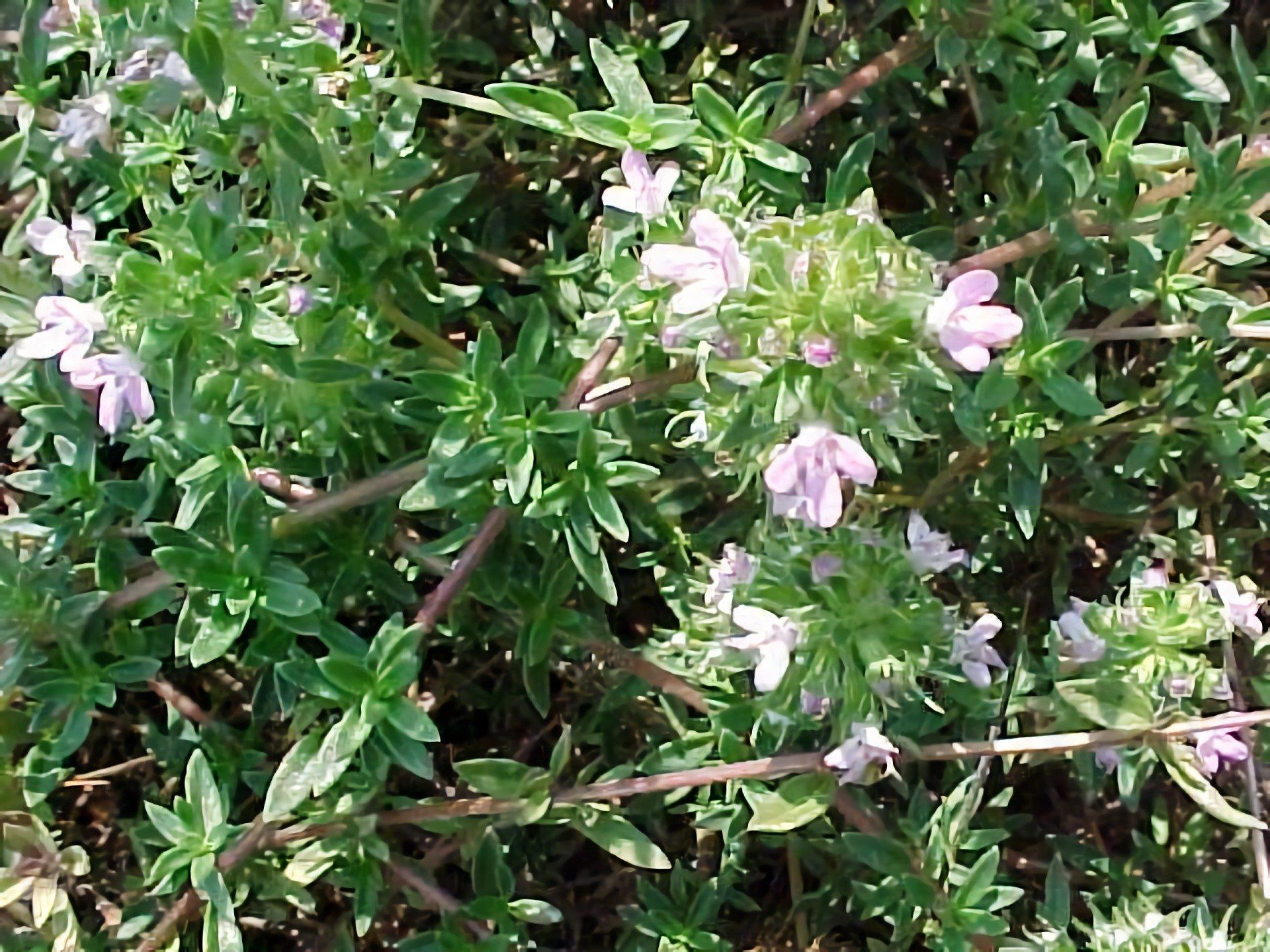
Caraway Thyme has dark green small leaves which have a scent similar to caraway seeds. If you are looking for a fast-growing ground cover thyme, then Caraway Thyme is an excellent choice. It is regarded as quite a rampant grower and should be used where space is not an issue. In summer it is a profusion of rose pink flowers entirely carpeting the plants.
Caraway Thyme can also be used as a substitute for real Caraway in many recipes. It is especially nice in bread or cooked with meat. The species name
herba-barona means “herb of beef” and refers to medieval times when herbs were frequently used to spice meat.
Want to learn more about plants and gardening?
Find out more about our weekly
Garden group.
